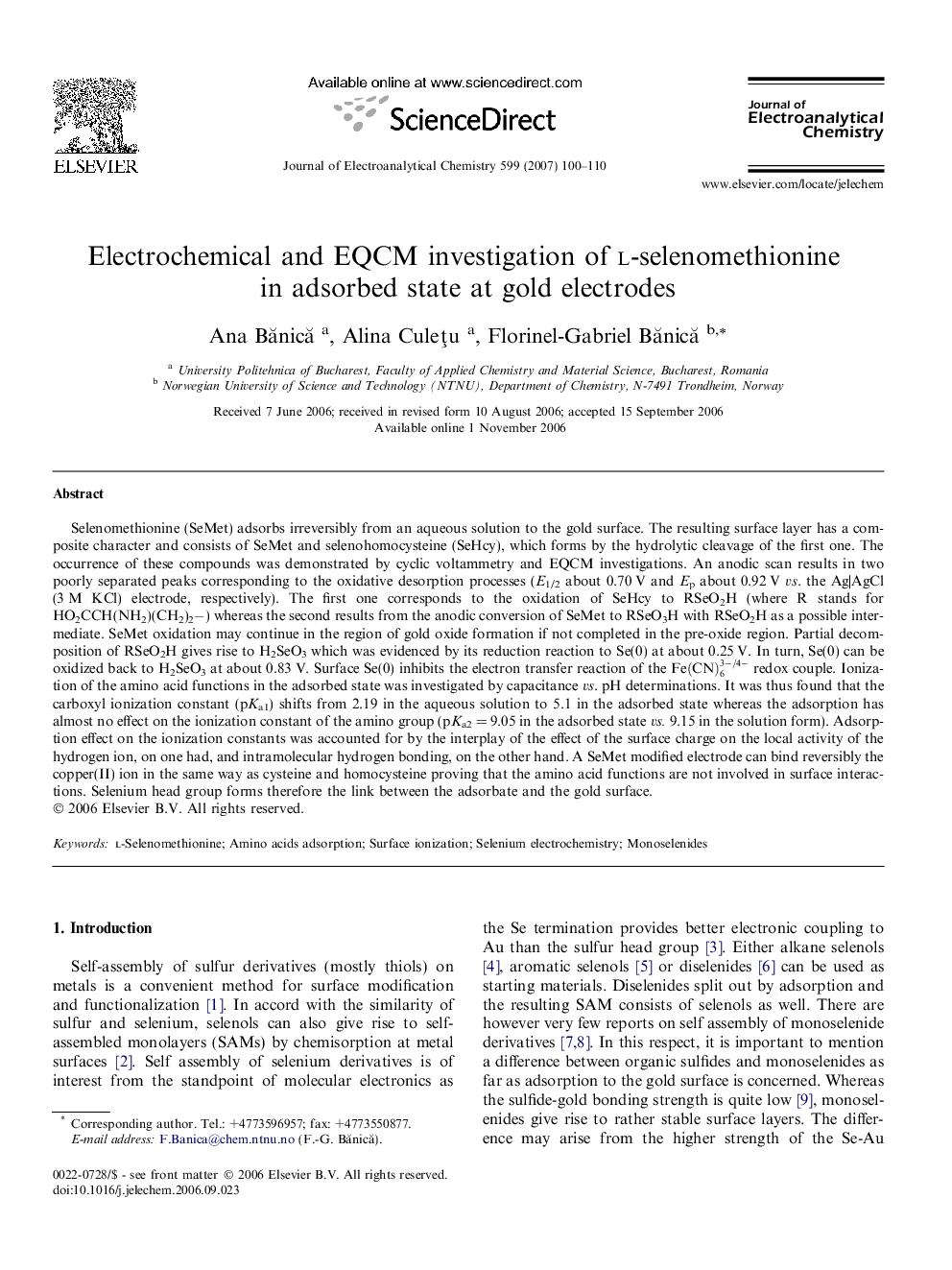| کد مقاله | کد نشریه | سال انتشار | مقاله انگلیسی | نسخه تمام متن |
|---|---|---|---|---|
| 221059 | 463368 | 2007 | 11 صفحه PDF | دانلود رایگان |

Selenomethionine (SeMet) adsorbs irreversibly from an aqueous solution to the gold surface. The resulting surface layer has a composite character and consists of SeMet and selenohomocysteine (SeHcy), which forms by the hydrolytic cleavage of the first one. The occurrence of these compounds was demonstrated by cyclic voltammetry and EQCM investigations. An anodic scan results in two poorly separated peaks corresponding to the oxidative desorption processes (E1/2 about 0.70 V and Ep about 0.92 V vs. the Ag|AgCl (3 M KCl) electrode, respectively). The first one corresponds to the oxidation of SeHcy to RSeO2H (where R stands for HO2CCH(NH2)(CH2)2−) whereas the second results from the anodic conversion of SeMet to RSeO3H with RSeO2H as a possible intermediate. SeMet oxidation may continue in the region of gold oxide formation if not completed in the pre-oxide region. Partial decomposition of RSeO2H gives rise to H2SeO3 which was evidenced by its reduction reaction to Se(0) at about 0.25 V. In turn, Se(0) can be oxidized back to H2SeO3 at about 0.83 V. Surface Se(0) inhibits the electron transfer reaction of the Fe(CN)63-/4- redox couple. Ionization of the amino acid functions in the adsorbed state was investigated by capacitance vs. pH determinations. It was thus found that the carboxyl ionization constant (pKa1) shifts from 2.19 in the aqueous solution to 5.1 in the adsorbed state whereas the adsorption has almost no effect on the ionization constant of the amino group (pKa2 = 9.05 in the adsorbed state vs. 9.15 in the solution form). Adsorption effect on the ionization constants was accounted for by the interplay of the effect of the surface charge on the local activity of the hydrogen ion, on one had, and intramolecular hydrogen bonding, on the other hand. A SeMet modified electrode can bind reversibly the copper(II) ion in the same way as cysteine and homocysteine proving that the amino acid functions are not involved in surface interactions. Selenium head group forms therefore the link between the adsorbate and the gold surface.
Journal: Journal of Electroanalytical Chemistry - Volume 599, Issue 1, 1 January 2007, Pages 100–110